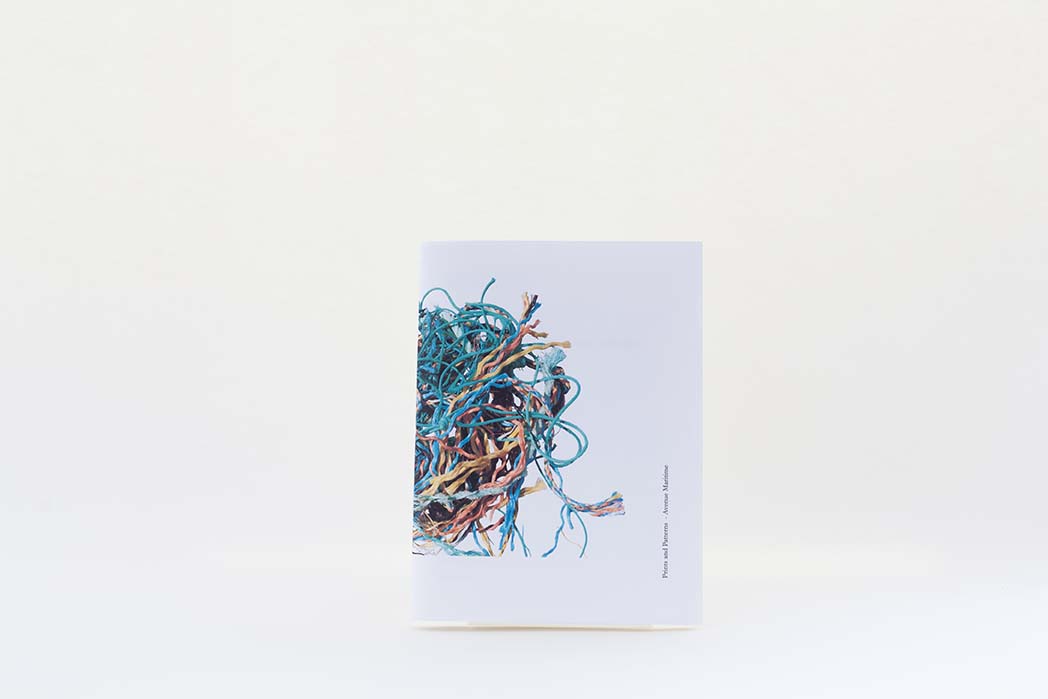
A handmade book, that is part of a package of 3 books and 1 poster
The package consists of Prints and Prints and Patterns -The Blanket,
- Avenue Maritime, -Tie Dye and the poster Kunst der Farbe
Size: 16,5 x 22 cm
Edition: 50
Publication date: September 2023
Price individual book: €20
Price package: 60
In a small coastal town in Normandy, along the boulevard, which is called avenue here, the houses are empty almost all seasons. The shutters are down, the gates are closed. Although the villas are hardly inhabited, they are well maintained.
On this sunny day at the end of May, there is no one to be seen here. Only my husband, the dog and I are there.
I’m in Normandy to get away from it all. I have no patience for the book I brought with me and give myself an assignment. At the entrance to the beach, the plastic waste from the sea is collected in large wooden bins. No trays and bags, but thick tangles of brightly colored fishing net. I use the nets to make weaving samples with different patterns and colors. One for each white house, because I like the white houses best.
While weaving, my mind wanders to the story of two young Swedish women who bought a refurbishment house in the countryside. They wove all the textiles used in the home. Curtains, upholstery fabrics, blankets, rugs, mats (including the doormat), bath towels, tea towels and even the dishcloth. Eventually they wrote down all their recipes in their book ‘The Weaving Handbook’, in which weaving as a craft is celebrated. Today, weaving as a craftsmanship is widely appreciated and handmade textiles are sold as ‘quiet luxury’.
How different it was in the early days of the Bauhaus, where weaving was considered too domestic and too labour-intensive and the textile workshops were given almost no significant role. Later, under Gropius in 1924, the institute had to focus more and more on making standard products for economic reasons. Weaving had to evolve from traditional to industrial, with a focus on the functionality of textiles in the architectural space. It meant the emancipation of both the weavers and the craft. And so the Bauhaus weavers entered the next phase of their weaving practice and began making ‘Meterware’ rather than unique applied art objects for the wealthy.